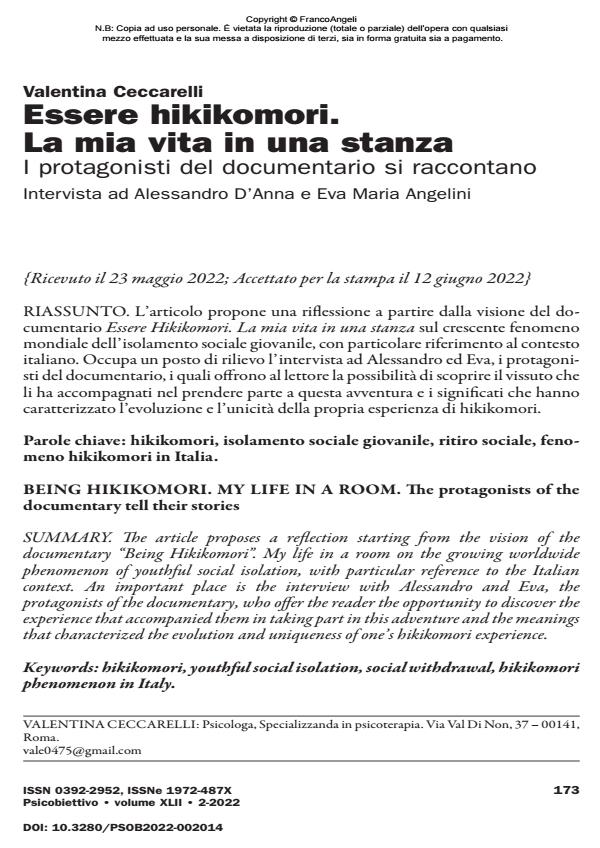Being hikikomori. My life in a room. The protagonists of the documentary tell their stories
Journal title PSICOBIETTIVO
Author/s Valentina Ceccarelli
Publishing Year 2022 Issue 2022/2
Language Italian Pages 15 P. 173-187 File size 657 KB
DOI 10.3280/PSOB2022-002014
DOI is like a bar code for intellectual property: to have more infomation
click here
Below, you can see the article first page
If you want to buy this article in PDF format, you can do it, following the instructions to buy download credits

FrancoAngeli is member of Publishers International Linking Association, Inc (PILA), a not-for-profit association which run the CrossRef service enabling links to and from online scholarly content.
The article proposes a reflection starting from the vision of the documentary "Being Hikikomori". My life in a room on the growing worldwide phenomenon of youthful social isolation, with particular reference to the Italian context. An important place is the interview with Alessandro and Eva, the protagonists of the documentary, who offer the reader the opportunity to discover the experience that accompanied them in taking part in this adventure and the meanings that characterized the evolution and uniqueness of one’s hikikomori experience.
Keywords: hikikomori, youthful social isolation, social withdrawal, hikikomori phenomenon in Italy.
Valentina Ceccarelli, Essere hikikomori. La mia vita in una stanza I protagonisti del documentario si raccontano Intervista ad Alessandro D’Anna e Eva Maria Angelini in "PSICOBIETTIVO" 2/2022, pp 173-187, DOI: 10.3280/PSOB2022-002014